If your golf swing feels out of sync or inconsistent, this video is perfect for you. Harry Shaw breaks down what the tour pros use in every swing that helps create a connected golf swing.
The best part about this is that it’s simple enough for any golfer to copy regardless of your age or ability. With Harry’s clear explanation and practical drills, you’ll be fully equipped to use this key to your advantage out on the golf course.
*
CHAPTERS
00:00 The Amateurs Mistake
01:57 The Key Pro’s Use You’re Missing
02:47 Breakdown of the Takeaway
04:46 Intro to The Connection Band
06:05 Breakdown of the Backswing
09:20 Full Backswing Recap
10:20 Bonus Tip – The Downswing Sequence
14:41 The Connection Band Tip For Downswing
15:28 What To Do When Using DRIVER
*
Use Code: HARRY10 for 10% off FinalPutt (The Connection Band) 👉 https://finalputt.com/harryshaw
*
My Links 👉 https://linktr.ee/HarryShawGolf
*
My Course Management Guide 👉
https://harryshawgolf.kit.com/products/thecourseguide
*
Use Code: HARRY20 for $20 off Precision Impact 👉 https://pureswingproducts.com/HarryShaw
*
Use HARRY10 for 10% off Ageless Golf Fitness Programs 👉 https://www.agelessgolffitness.com/challenges
*
Use Code: harry5 for 5% off The HackMotion Sensor 👉 https://hackmotion.com/harryshaw
*
Online Lessons 👉 https://skillest.com/coach/harry-shaw
*
In-Person Lessons 👉 https://www.thegolfprojx.com/golf_simulator/golf-lessons-with-harry-shaw/
*
Share This Video 👉 https://youtu.be/5C0hKf_AHf4
____________________
DISCLAIMER:
👉 I benefit from sales via the Connection Band from FinalPutt.
The most common improvement from my students this year has been to be able to get a very much so disconnected golf swing to a connected and reliable golf swing. Both back swing and also the down swing. And this is what a lot of the tour players do so consistently that allows them to play great golf. So, if you’re currently stuck and feeling like your golf swing at the moment is a little bit all over the place, where your arms are moving one way, the body is moving another, and it feels like you’re having to make loads of compensations last minute to hit the golf ball, this video is going to be perfect for you because I’m going to show you what the pros do so well in their back swings and down swings that allows them to keep a very much so connected and reliable golf swing as anyone, no matter their age or ability, will be able to do this. So, for those of you who are new to the channel, welcome. I’m Harry, a golf teach professional, posting content just like this every single week. So, consider subscribing to the channel. If you do, go ahead and try these tips and drills, and they help you improve your golf. Now, what we tend to see with a lot of amateur golfers or my students that first came to see me with the issue of getting very disconnected in their golf swing was due to the fact that their arms and body were starting at different times and stopping at different times during the back swing. So what was tending to happen, the most common move that was being caused in the back swing was that the arms would start the golf swing, then the body would try and catch up, then once the body had finished rotating, the arms would carry on and stop at a longer point. They would stop after the body rather than stopping at the same time. What this would cause them in reaction to this was to try and get the club back on plane. They’d start with their arms, then have to fire the body, and then at last minute having to make compensations to screw up the face and make decent contact with the golf ball. Now, that’s an awful lot to think about in less than a second when you make your golf swing. So to simplify this, what a lot of the tour players do, the greatest example I can give from the top of my head, Adam Scott in his back swing, taking a look at his swing from the side on view, is that he is able to keep his arms and body connected by starting them at the same time and stopping them at the top of the golf swing at the same time. Think about it. If we’re able to get the arms and the body connected and starting at the same time and finishing at the top of the golf swing at the same time, how much easier is that going to be to be able to implement the right down swing sequence? It’s going to be much easier, isn’t it? We’ve not got the arms carrying on moving and the body stopping already and then causing loads of compensations last minute. We’ve got a nice and connected, compact back swing that’s going to make the down swing much easier. So that is what they do. So well, how can we add this into our golf swing? So what I want you to start off with is standing to the golf ball as you normally would in your posture and setup. And you can try this without the golf club, by the way. So if you’re watching this on the big screen, feel free to stand up with me now and give us a wool and just simply make your grip like so. What I want you to do to start off with is just make two little creases at the top of your arms like this here. So both of them are tucked into one another. Now, the key is to be able to keep these two tucked in, not loose, during the back swing. What that’s going to encourage you to do on the way back is add rotation sooner from the body. If we can add rotation sooner from the body, it’s very much so likely that the arms and the body are going to start the golf swing at the same time. So, if I just make those two creases again at the top parts of my arm, taking my grip as normal, as I start this golf swing now, all I’m thinking about is getting my trail hip here to rotate round. I’m not putting any sort of focus or movement into the arms. I’m just letting them move alongside the body because we’re keeping this connection between the arms and the body. That’s what’s allowing me here to get the arms and the body to turn and start that golf swing at the same time. So, what you’ll notice with Adam Scott as he makes his way into the takeaway position, it’s all pretty much done through what we call a one piece movement, a one piece takeaway. A one piece takeaway isn’t wrist going, isn’t arms going, isn’t body going afterwards. It’s everything moving at the same time getting to this point here. So, I’m allowing my hip here to turn. I’m keeping my arms connected to the body here and just simply allowing I’m watching the golf club here just to check it gets into the right position where the club shaft itself becomes parallel with my feet alignment here. Now, to simplify this movement, I’m going to be using the connection band at several points throughout this video. And what the connection bands allows golfers to do is to keep their arms connected to the body without having to focus on actually keeping them connected. This does this for you. Allows you to get the correct feels of what it’s like to keep both of them together, especially when it comes to the very top of the golf swing. Now, I’ll explain that later on. So, with this connection band here from Final Put, I’m just going to place this through both of my arms just above my elbows, just like this here. Now, when it comes to the takeaway, all I really have to think about, yes, I still want to try and keep them tucked in, but I’m not going to make a conscious effort here because the connection band here is going to force my arms to stay in. It’s forcing my arms here to actually squeeze into either side of my chest muscles here, my pectoral muscles. So, what that’s encouraging me to do already is keep them both tucked in. So, all I have to think about here, all you’ll have to think about if you try using one of these is simply rotating into this first part of the golf swing. Now, if you’d like to learn more about this training age, you can use the link in the description below, the final put connection band along with my discount code, or simply click the QR code over to the right hand side of your screen now if you’re watching this on TV. So, when it comes to moving this then into the back swing, the question is, how do we get the arms and the body to stop at the same time? So, let me just take the final put connection band out just to show you the feels that I would recommend without it and then how this makes it so much easier to get into the correct positions. This stops a key error that I see so many golfers do in the back swing. So, make sure you stick around for that. So, as I make my way into the back swing here, what I’m going to focus on after the takeaway point is ensuring that I get my back to face as close to my target as I can. That allows for a full rotation. And because of this, it’s going to make my arms finish shorter. As I mentioned before, the body stops and the arms carry on up to the top of the golf swing. That’s the tendency. So, to stop this, we’ve got to allow the rotation all the way up to the 90° angle here. And that’s going to allow my back to face towards the target, but it’s going to make it easier to keep my arms nice and tucked into the body, more importantly, stopping them at the same time. So when I do this up to the top again, I’m focusing on that back swing. Do this with me now. I’m going to turn that right hip into the takeaway, keeping both my arms tucked in just like this here. Then from this point, I’m going to try and get my back to face towards the target as I allow this trail arm here to begin to fold upwards. So we don’t want this arm folding this way and flaring outwards like this here because that causes that disconnection. and it causes a very much so disconnected back swing. That’s where the connection band comes in handy. So, when we get to the top of the golf swing, we’re trying to ensure that we keep this arm tucked in rather than flared out. You can do this without it by focusing on keeping both of these two points here in tucked in for the back swing. Getting that rotation, one piece movement of the takeaway and simply getting the back to face towards the target as we allow the trail arm to fold. But it’s very easy when it comes to full swings at full speed to let this arm start to flare out. So that’s the key fault, the common fault that I see too many golfers do when they try this. And the connection band has been proven to help with this. So I’m going to place this in my arms here. I’m just going to practice that movement because now all I have to really think about for the entire back swing itself is just getting that full turn. This here is going to allow me to set my arm. It’s allowing me to fold my arm up to the top of the golf swing here correctly without flaring it out. I can’t pretty much physically do that here. I can feel it’s stretching and pulling me back in to keep my arms connected to the body. That’s going to help me stop them at the same time. So, I’m getting that one piece takeaway, turning from that trail hip into the back swing. Then, I’m just allowing my back to face towards the target. If you do find with this that you’re not quite at that 90° point, you’re not quite at that back facing fully to the target, just go as much as you can until where feels comfortable. Don’t go any more than that. Don’t push yourself too much. As long as you can get a little bit more rotation into the back swing, that’s going to be a massive benefit for you. So, all in one motion, try this with me now. I’m just turning into the back swing, then getting my back to face towards the target. Then from there, the down swing sequence is much easier to apply. So, I’m going to add in that bonus tip in just a sec. But let me just show you what this looks like hitting a golf shot. It’s a nice little draw there, which is what I tend to play with. Good strike from that easy connected movement during the back swing. Now, that can be more than enough for you to go out and practice and take on board those tips and drills that I’ve given you for the back swing and using the connection band. It just makes it a lot easier to add that movement in sooner into your golf swing, especially when it comes to swinging faster, like the shot that I’ve just hit there. So feel free to check this out using the link in the description below or you can use my QR code on the right hand side of the screen now to check out this product and using the discount code you can get yourself a nice discount off this training aid as well. So the bonus tip I want to give is for golfers who think well although I’ve got those points for the back swing which is great how can I make sure I get that down swing sequence correct? Because some of us want a few more focus points. I’m the same when it comes to the actual swing so I understand where you’re coming from. Let’s take a look at the down swing. Now, the bonus tip that I want to reveal that’s going to help you get that back swing and down swing staying connected, forming the correct sequence. So, in order to get the down swing sequence to start correctly, we want it to begin from the lower body. When we take a look at Adam Scott’s down swing just to begin with here from the the face on view, what you can see is the lower body switches on first. Then it works all the way up to the hips, the core, chest, shoulders, arms, then to propel the club into the back of the golf ball. So, think of this simply as a relay race. The lower body starts and it works all the way up to the upper body. Everything’s running behind and then last minute everything catches up to hit the golf ball. Now, to make this consistent, we actually do want a touch of separation between the lower and upper body to keep things consistent. So, now I get to the top of the golf swing here. My focus is turning that left hip open. So, rotating this back and around like this, back rather than forwards. We don’t want to go forwards, otherwise we’re going to tilt too far back. I’m just twisting back and around. But the key to this is keeping the shoulders closed. So, simply put, the golf club that you’ve got across your shoulders or alignment stick or whatever you’re imagining that’s there is pointing at the golf ball, keep it pointing there. That’s going to allow you to get that ever so slight separation between the lower and upper body, and that’s going to help you initiate the down swing correctly. Now, when it comes to trying this with the actual golf club itself, what you want to be ensuring of is to start this down swing, we don’t encourage the shoulders here to follow the hip. Because you could see what happened then. Just replay that. We went over the top. If the shoulders follow the hips from the top of the golf swing, we’re going to swing over the top. Then we’ve got to jump out the way, which is a compensation for the down swing. No good. Ruins the swing sequence. We don’t want that. So, at the top of the golf swing, all I’m focusing on is turning that hip, trying to keep my shoulders closed, keeping that club or alignment stick pointing at the golf ball. And what that’s allowing me to do with the club here is simply bring it down. It’s allowing my arms to come down naturally from this movement. Maybe I’m forcing this a little bit just to make sure that I’m not swinging over. But because I’m keeping my shoulders closed as I rotate the hip here, the only way for me to move the golf club into the down swing is moving it into a shallower position. And this is what all the tour players, well, a lot of the tour players do so well. There is that ever so slight change in direction of the golf club to start the down swing. Yes, it stays all on one plane back and forth. But if you were to draw a line on the back swing and the down swing, there’ll be an ever so slight change in direction, change of movement, change of angle. So that change of angle allows you to shallow out the golf club and return the hands and club down into a really nice delivery position. Then from there, everything becomes natural to make solid contact with the golf ball. Sounds easy. How can we simplify this and add it into the actual golf swing? So, it’s that feeling at the top of the golf swing here. Hip rotating, arms come down, and then we’re just swinging through. Simple as that. To make things even more simpler, the connection band just allows both your arms to stay connected during that down swing as well. And it’s great because you can swing at very fast speeds and it encourages both your arms to stay connected. In fact, it’s better to practice with this quicker during the down swing because it forces you to keep your arms in and connected. So, you will get that instant feel with this of what it’s like to start that down swing sequence correctly from that drill and tip I’ve just given you, but also how to keep the arms connected during that movement. So, as I’m practicing this for the back swing, I’m just focusing on getting that full turn with the connection band on. Then from there, I’m turning that hip, keeping my shoulders closed for as long as I can. And that’s just allowing my arms to fall down, keeping them connected with the connection band. Then I can just turn and hit the golf ball from there. I’m not having to think about anything else in the golf swing whatsoever. So that’s nice and simple. You can add that into your iron swings. Beautiful strike. ever so slightly push just left that club face a little bit open which is my tendency that I’m currently working on but you can also do this with the driver as well with the only difference being that at the setup I’m just allowing that ball position to be ever so slightly further forward. I’m also allowing an ever so slightly wider base just to ensure that I’m staying balanced in balance during the back swing and down swing but also I’m not tilting back like this here. This is one of the things that my students said that they tend to do to try and hit up on the golf ball. And doing way too much of this movement here is going to actually encourage you to hit the ground first or end up topping the golf ball and hitting them out the bottom. So instead, just stay nice and over the golf ball and place your golf club just on your sternum like this here just to ensure that the golf club here is pointing directly down towards the middle of your stance. If you’re tilting too far back, the driver head would favor more towards the trail foot. So have that directly in the middle so you’re nice and over. And just having the ball position ever so slightly more forward is going to help you get that upward motion anyway. And adding this back swing move and down swing move all in one motion. That’s going to help you strike the golf ball pure and get that upward attack angle as well. So the connection band, one of my favorite things with this is that you can use this with any golf club and swing as fast as you want. So you can actually practice this straight away with driver and that’s going to force you to keep your arms in and connected throughout the golf swing. So you can literally practice this movement with the driver with the connection band in and it makes it so much easier for you to get into those positions without having to remember all those things in the golf swing. So I’m setting up to the golf ball. My focus here is that full turn into the back swing. Then I’m just starting that down swing from that left hip rotating and allow my hands to fall down in reaction to this. So full speed with the driver. Let’s see where this goes. Nice little draw. I’ve nuted that one. took a really nice kick off that bank straight down there. The connection band really forced me to keep everything in to keep that down swing nice and connected. Very easy for me to do there with driver. I would really recommend checking out the connection band from final put as it does help you keep your golf swing more connected and therefore more consistent. You can check out the link in the description below or again you can use the QR code over to the right hand side of your screen. If you have enjoyed this video and come so far, I’d recommend clicking that subscribe button as there’s loads more content coming out every single week to help you improve your golf game. And why not check out this video over here in the meantime if you’re looking for more golf tips like this as YouTube believes this video over here is the best one for you to watch next. Thanks for watching and we’ll see you in that one over

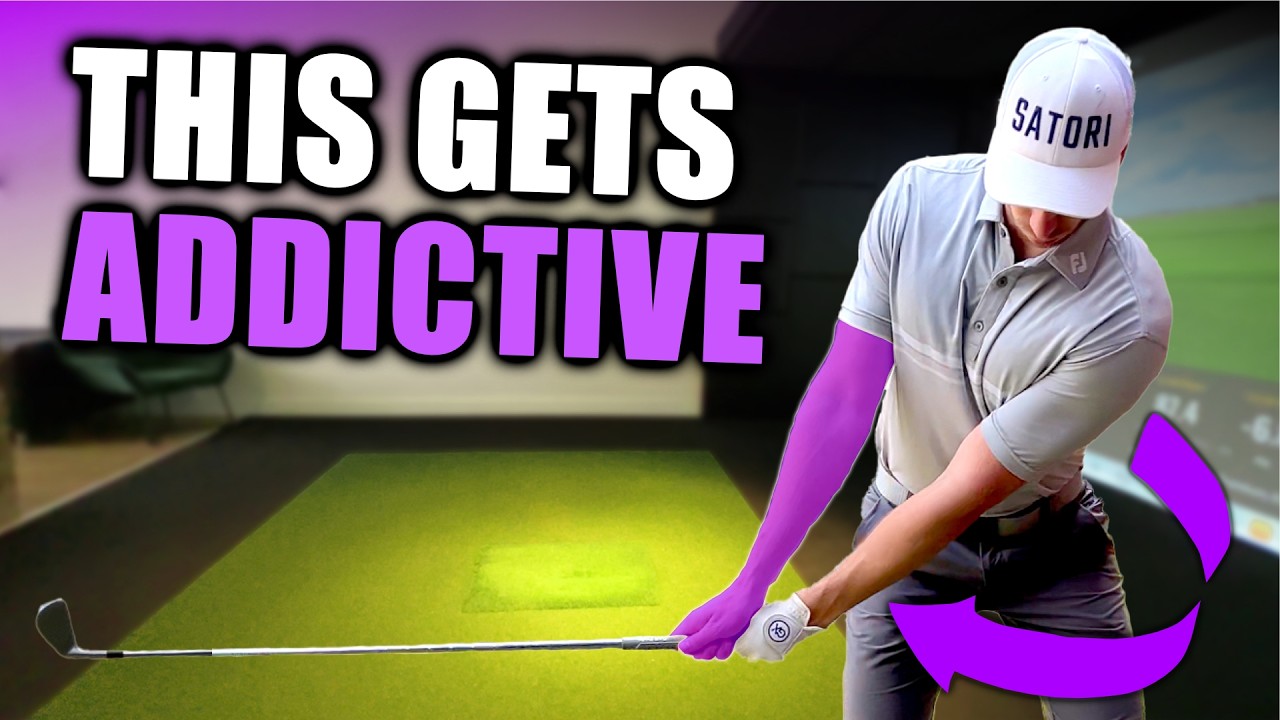
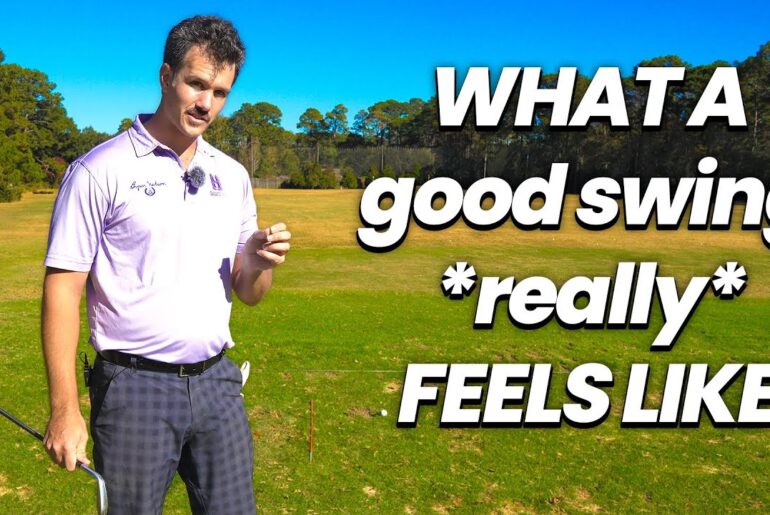

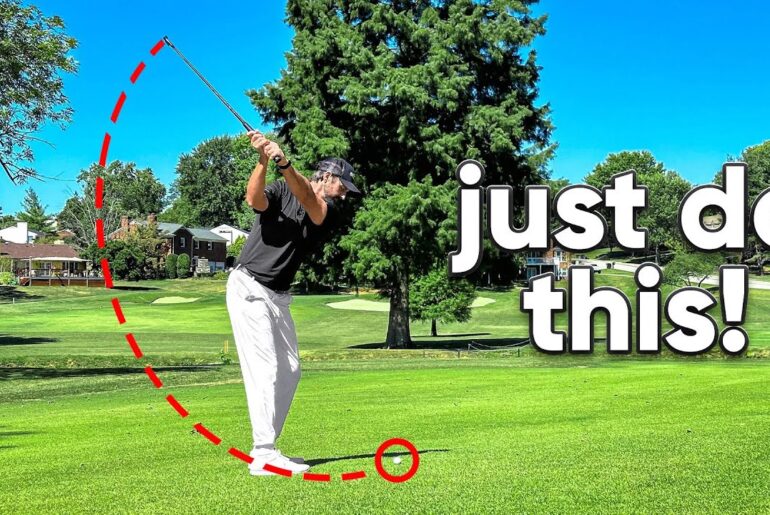
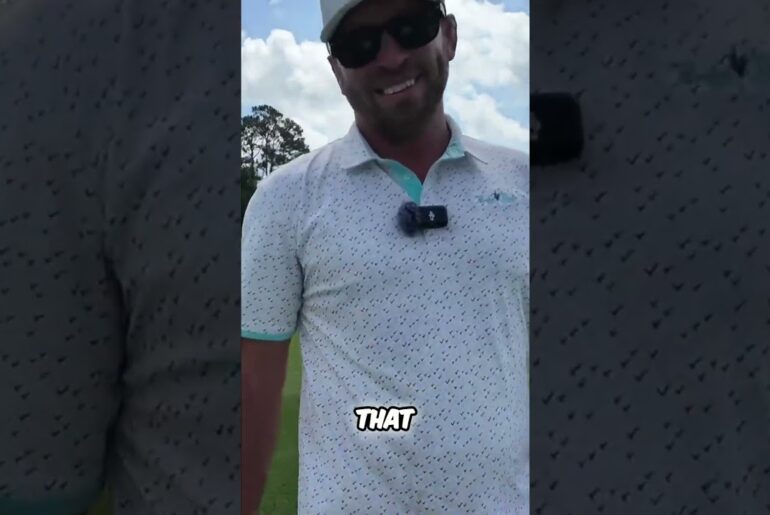
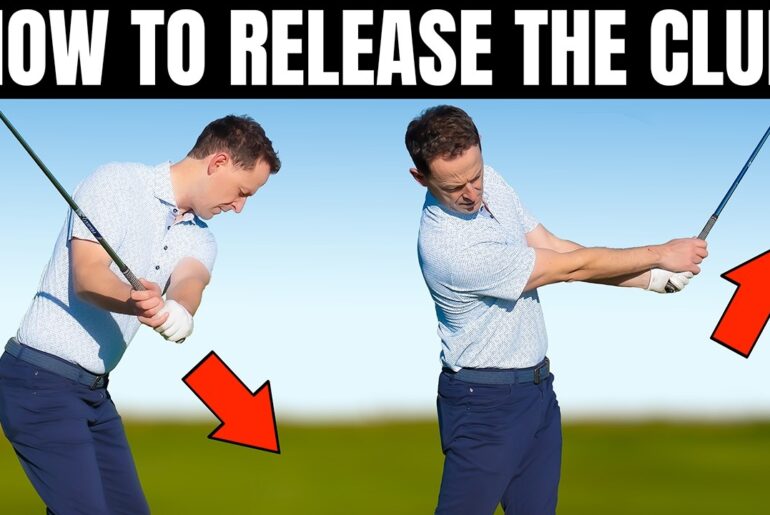
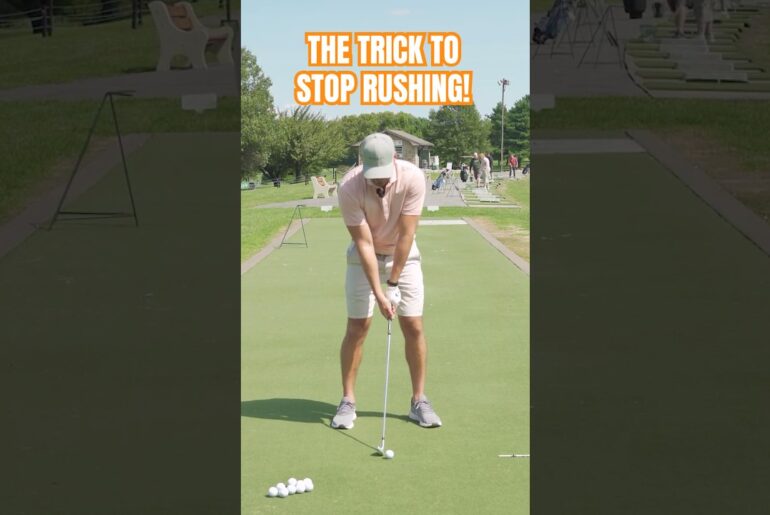
2 Comments
You Can Checkout The Connection Band at https://finalputt.com/harryshaw and use the code HARRY10 to get 10% off.
Great video, so relevant to me. However it easier to say than do, plenty of repetitions required and practice. How come so many club golfers have the same swing flaw yet the majority of pros get it right!